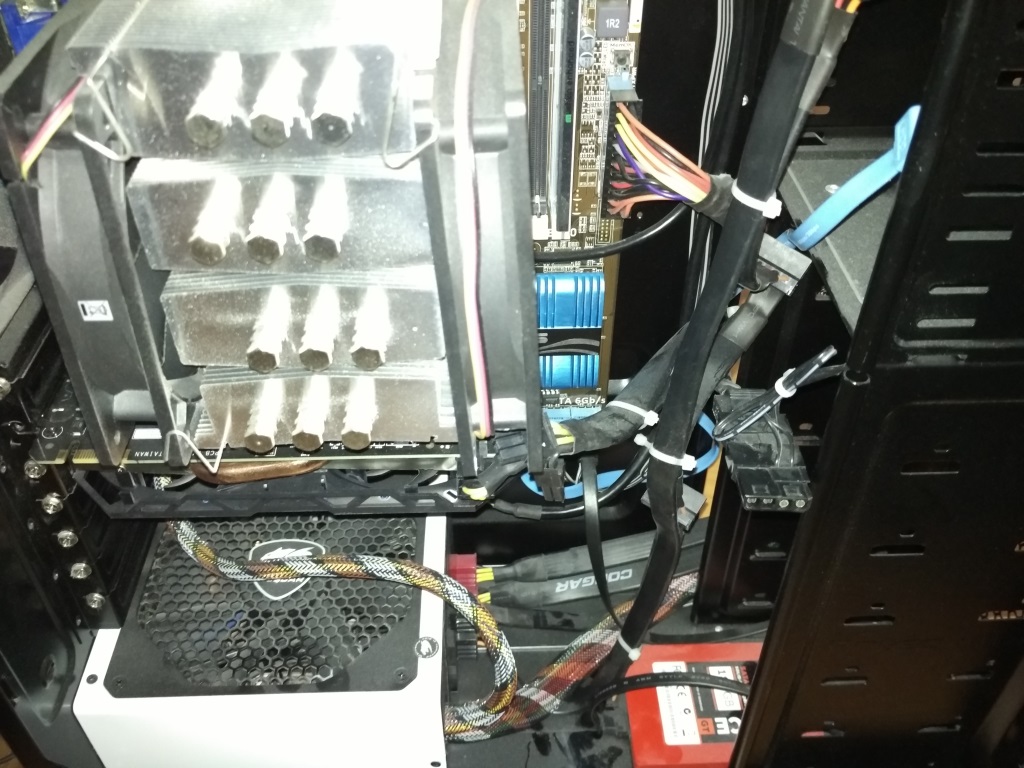If your PC does not turn on anymore, try this
I'm not a hardware guy. While I'm capable of building a PC from scratch by selecting compatible components and putting it all together, I'm only interested in hardware when I'm about to build a new PC and not the other time of the year.
One of the first things I do each morning is to power on the PC. Imagine my surprise when my PC would not boot at all.
This guide provides you with tips that may help you fix the not turning on issue on your own. Please note though that it won't provide a 100% surefire way of fixing things as there is none.
Instead, it will look at basic diagnostic options that may help understand what is happening. Often, it is a basic issue that is easily fixed even if you have no idea about components that computers use to function.
Inspection

Also a good time to clean the PC from dust.
Instead of panicking right away, take a look at your PC and the connected components. In particular, check the following:
- Do other electronic devices work. If power is out completely, those won't work as well.
- Check the power connection to the PC. Make sure the cable is not lose. Also, make sure the power connection is working by testing it with another electronic device.
- PCs have a power on/off switch on the back usually. Make sure the switch is in the on position.
- Check if the PC monitor has power, and that its connection to the PC is firm in place.
- Check the power and reset buttons at the front. Do they appear stuck or out of place?
After inspecting the PC externally, it is time to open it up if the above suggestions did not fix the issue already. While I'd usually suggest you turn off the power before you do so, you may get important clues why something is not working if you keep the power on for a moment longer.
Open the left side of the PC panel. You may need a screwdriver for this or can use your hands to do so depending on the tower used.
The motherboard indicates with an LED light usually if it gets power. If you don't see any light there, it can mean that cables are not connected properly anymore, or that the power supply is dead.
Try hitting the on switch again. Do you hear fans starting to work inside the PC? Or beeping sounds that some from the internal speaker system?
If you hear fans starting, you know that the motherboard is getting power. Beeping sounds indicate issues and you can check out the codes here on this page.
Please remove the power connector from the PC and switch the power supply state to off before you continue.
Once you have done so, it is time to check the connecting cables. As far as components are concerned, the most important ones are the power supply unit at the back that supplies power to the system, the motherboard, the processor, the video card, and memory.
I suggest you check all cables and make sure they are firmly in place. If you notice a lose cable, it may very well be the reason why the PC did not turn on.
Also, check that memory and the video card are connected properly.
The power on button was stuck on the PC that would not boot this morning. All I had to do was put it in the right place to have the system boot up again without any further issues.
Once you are done with the checking, plug the power cord back in and flip the power switch back to on. Try starting the PC and monitor what is happening.
What if those methods did not fix the issue?
One thing you can try is remove any component that is not required to run the PC. This means external devices, all but one memory module, internal cards (not the video card obviously).
Best option here is to remove everything at once, and remember where each component went, to see if the PC starts up afterwards. If it does, add each component one by one to the machine again and test if it caused the issue.
If that does not work, then you may want to test other components if you have them around. You may not have a spare power supply unit, motherboard or cpu though, and even if you do, may not be comfortable testing the system on your own.
Your best bet then is to ask a friend for help if you know someone who is proficient in these things, or take your PC to a repair shop to get it looked at there.
This article was first seen on ComTek's "TekBits" Technology News

- Log in to post comments